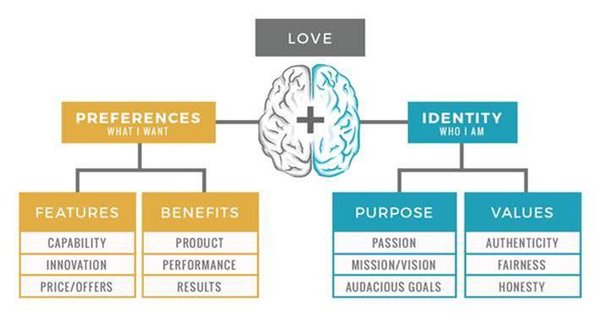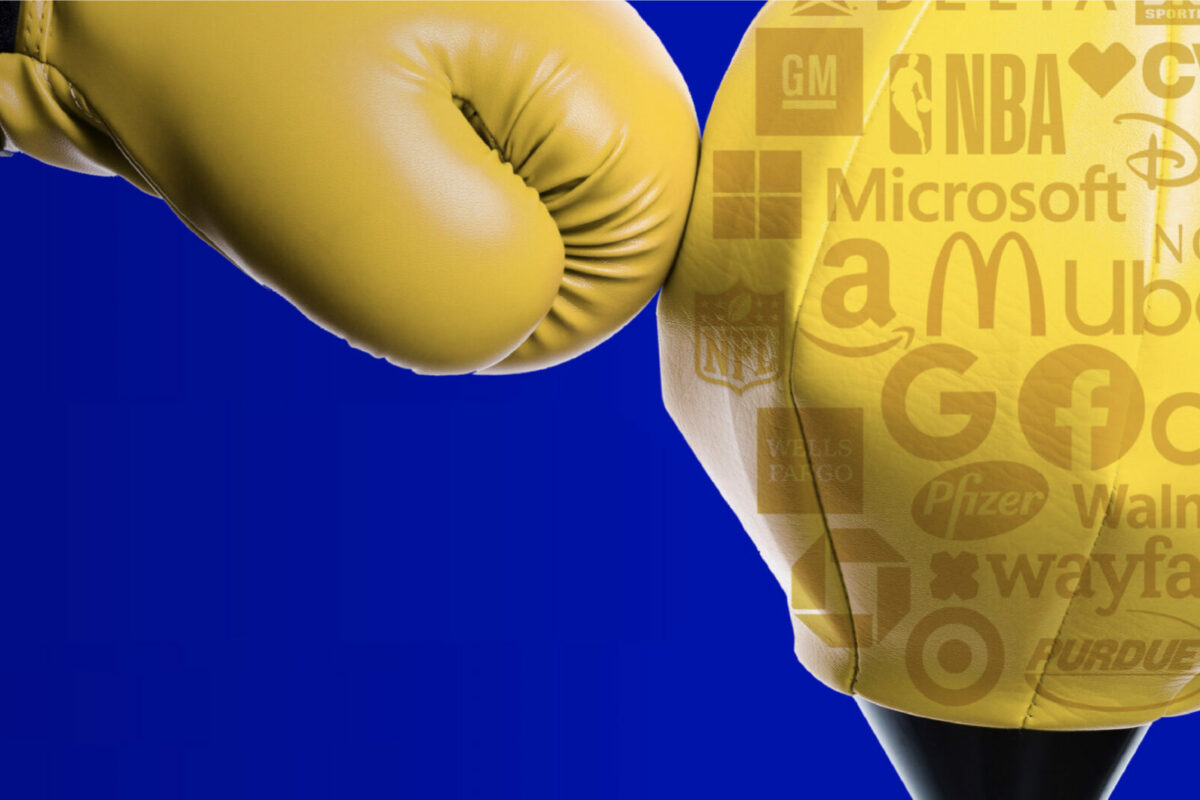There are brands that consumers trust and there are brands that consumers love. Love is not easy to achieve. It requires a certain tipping point of positive stimulus in the consumer brain. We are mistaken if we believe a brand can be loved by meeting the personal preferences of its consumers. There is no measure of contribution a brand can make to achieve love by satisfying consumer preferences in relation to self-interest.
That’s because the human emotion of love is not associated with self-interest. Love is more closely associated with selflessness. The old model built on self-interest was never able to fully explain why people would choose to have children, or why they would sacrifice so much for them. Love is an unconscious motivator that moves the human condition past the base motivators of self-interest toward social awareness, or even preference toward others.
In Nobel Prize-winning economist George Akerlof and Rachel Kranton’s hypothesis on Identity Economics, they questioned the original concept of behavioral economics. They found that belonging and values of community are core to human identity. That’s why values are often the most powerful force of influence in consumer behavior, or any behavior for that matter. Indeed, they wrote about the rules for behavior saying modern scholars “agree on the importance of anxiety that a person experiences when she violates her internalized rules.”
That means the consumer brain feel less anxiety over choices about features and benefits than they do when they make choices that might violate their core purpose or values. These core values are tied directly to the most powerful motivator in the consumer brain: love.
The consumer brain is less interested in meeting its need for preferences toward features and benefits than it is in maintaining its need to get love or provide love to others.
Let’s talk tactics. How can we make this practical in the automotive industry, for example. The values of the automotive manufacturer are more important to its consumers than the features and benefits. People don’t fulfill their need for identity from a car that tested high in crash safety. However, that doesn’t mean that crash safety features and benefits are irrelevant either. In fact, these features and benefits may become critical to demonstrate your brand values.
Perhaps you think it’s silly for a brand to promise selfless love to its consumers, but consider Subaru. It wasn’t flattering to show a car smashed in a commercial about Subaru. In the commercial titled “I’m Sorry,” after a teenager gets in a car accident, the mom says, “You’re OK? That’s all that matters.”
When Subaru demonstrated safety as a selfless value owned by the brand, they earned the right to say, “Love, it’s what makes a Subaru a Subaru.” They were able to tie crash safety features to emotionally charged values of self-sacrifice that Subaru demonstrated by showing its vehicle smashed.
Values such as love are verified by action. That’s because the evolved consumer brain is acutely perceptive. It possesses an authenticity barometer that will test your values to be sure they are true. Before the consumer brain assigns love to your brand, your brand will need to demonstrate love first.
In this belief structure, the brain’s left hemisphere weighs in on your brand’s emotional promise with a desire to see action. That’s why you can’t fake your values in advertising. What good would it do if Subaru said it loved your kids, if their cars put them in danger? In this commercial, Subaru never had to say they loved your kids. They demonstrated love by their “lifetime commitment to getting them home safely” through crash survival outcomes.

In our updated belief structure, we must appeal beyond the preferences of our consumers to identify with their values. The consumer brain seeks preferences in the “what I want” part of the brain, but it will never violate its identity, or the “who I am” part of the brain. The latter function has been proven to short circuit self-interest. As we meet the preferences of our consumers to come into alignment with their identity, we will find values alignment. That creates a condition where love is found.
Best Practices For Employing Values
Consumers connect emotionally to your brand values. These are not soft, intangible feelings. Leading brands are flipping the pyramid. Brands are feeding and clothing consumers who can’t afford to pay. Brands are healing people through commerce. Brands are giving purpose to employees and to the consumers who love these companies more than any generation before us ever thought they could.
The longer brands take to get into the movement, the more they will look like inauthentic followers of this powerful trend. Significant benefits will be rewarded to brands who act now with authenticity, seizing control of early-mover advantages.
These are the key best practices to keep in mind:
1. Determine North Star Values For Your Brand: Establish a moral true north for your brand values that guides everything your company and its employees do. Plan a safe launch for these brand values in today’s socially charged marketing landscape.
2. Love Is The Greatest Value Driver: Most importantly, love is the universal value driver. If in doubt about a complex values question, test it to see if it falls under the definition of selfless love that you can demonstrate as a brand.
3. Social Cause Is The New Personal Service: In recent studies, a brand value proposition tied to social responsibility has shown more impact than personal service, which is being replaced by mobile apps and self-service.
4. Action Speaks Louder Than Words: That means demonstration is better than assertion. So, don’t be anxious to promote your values in your ads by talking about them, unless you can show accountability.
Contributed to Branding Strategy Insider By: Daniel Brian Cobb, excerpted from his book Surfing The Black Wave: Brand Leadership in a Digital Age.
The Blake Project Can Help: Please email us for more about our purpose, mission, vision and values and brand culture workshops and programs.
Branding Strategy Insider is a service of The Blake Project: A strategic brand consultancy specializing in Brand Research, Brand Strategy, Brand Growth and Brand Education




